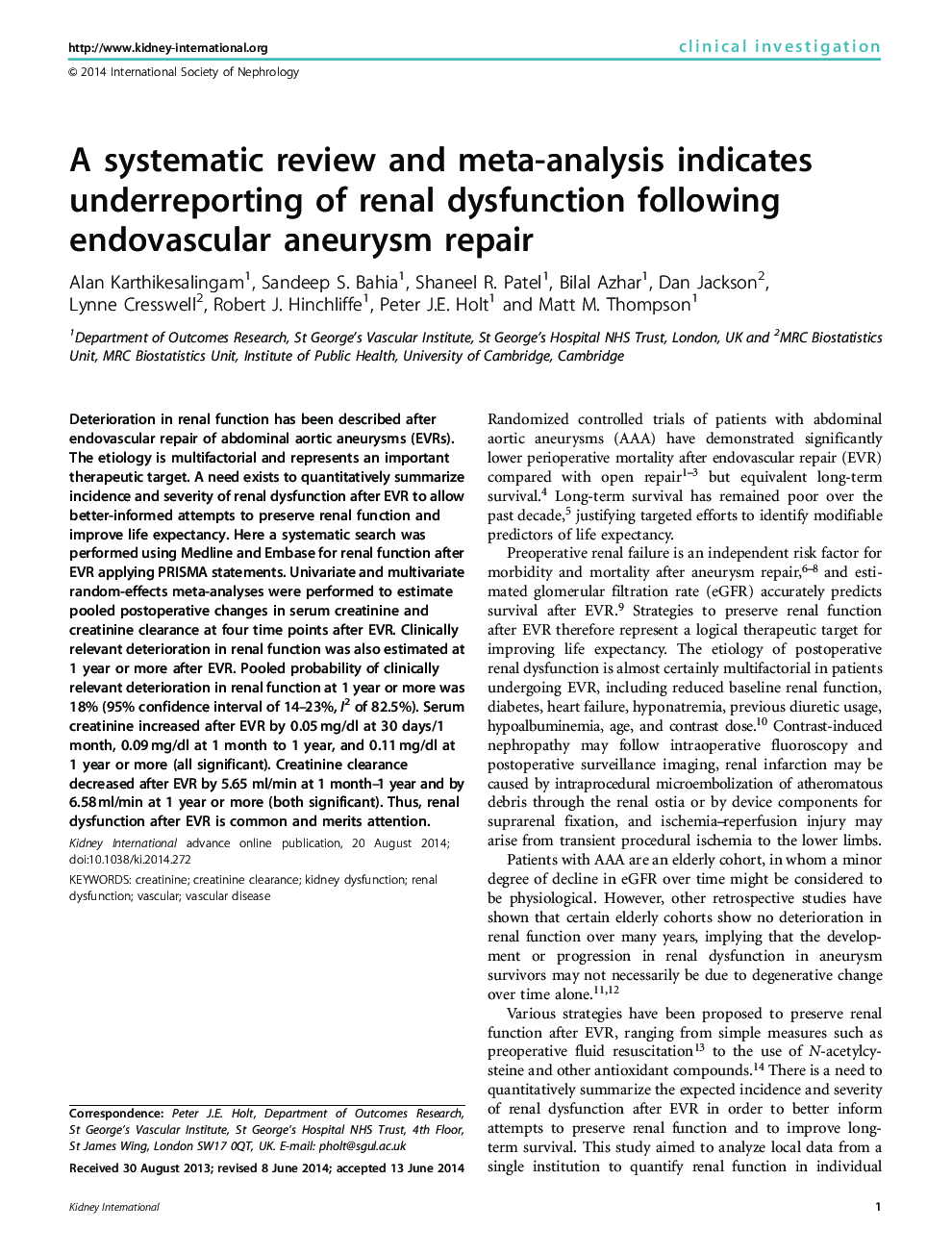| Article ID | Journal | Published Year | Pages | File Type |
|---|---|---|---|---|
| 6162266 | Kidney International | 2015 | 10 Pages |
Abstract
Deterioration in renal function has been described after endovascular repair of abdominal aortic aneurysms (EVRs). The etiology is multifactorial and represents an important therapeutic target. A need exists to quantitatively summarize incidence and severity of renal dysfunction after EVR to allow better-informed attempts to preserve renal function and improve life expectancy. Here a systematic search was performed using Medline and Embase for renal function after EVR applying PRISMA statements. Univariate and multivariate random-effects meta-analyses were performed to estimate pooled postoperative changes in serum creatinine and creatinine clearance at four time points after EVR. Clinically relevant deterioration in renal function was also estimated at 1 year or more after EVR. Pooled probability of clinically relevant deterioration in renal function at 1 year or more was 18% (95% confidence interval of 14-23%, I2 of 82.5%). Serum creatinine increased after EVR by 0.05Â mg/dl at 30 days/1 month, 0.09Â mg/dl at 1 month to 1 year, and 0.11Â mg/dl at 1 year or more (all significant). Creatinine clearance decreased after EVR by 5.65 ml/min at 1 month-1 year and by 6.58Â ml/min at 1 year or more (both significant). Thus, renal dysfunction after EVR is common and merits attention.
Related Topics
Health Sciences
Medicine and Dentistry
Nephrology
Authors
Alan Karthikesalingam, Sandeep S. Bahia, Shaneel R. Patel, Bilal Azhar, Dan Jackson, Lynne Cresswell, Robert J. Hinchliffe, Peter J.E. Holt, Matt M. Thompson,
